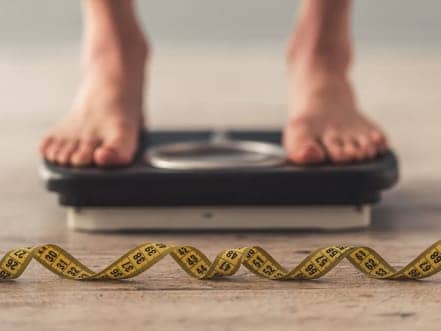In December 2016, a photograph released by the Imperial Household Agency shocked the country. It featured Princess Aiko, the daughter of Crown Prince Naruhito, smiling in celebration of her 15th birthday, but also looking like a different person to the Aiko we’ve come to know – she had evidently lost a great deal of weight and looked thin and frail. Although the royal family described Aiko as simply being “temporarily ill,” the media aggressively reported her to be anorexic.
In September this year, model, actress and former AKB48 member Mitsumune Kaoru announced on Twitter that she would be taking a break from work due to her long-term suffering from eating disorders. While Aiko and Kaoru are not the first public figures to come under the spotlight for weight loss and associated illnesses, to many it might still come as a surprise that Japan – known for its healthy diets, low obesity, and long lifespans (according to the WHO, as of 2016, Japan is still the country with the longest life expectancy) – has not escaped this particular disease.
Often called a homogenous society, Japan is known for conformity, and its people are not highly diverse (at least on the surface). The general physique is smaller than in Western countries, and there are guidelines on appearance at all levels within society. At schools, for example, students wear uniforms, and although they are not supposed to dye their hair, some feel forced to color their hair black if their natural color is lighter (i.e. different). Naturally, there is also a substantial pressure to remain as thin as those around you.
“For adults between the ages of 45 and 74, there is even a government policy called Metabo Law, which stipulates what your waist measurements should be”
For adults between the ages of 45 and 74, there is even a government policy called Metabo Law, which stipulates what your waist measurements should be (33.5 inches for men and 35.4 inches for women), and is monitored through annual company health checks. In such an environment, it’s no wonder people are feeling pressured to lose weight, and look the same as everyone else. In fact, when you Google “anorexia” in Japanese, one of the related keywords that pops up is “anorexia, want to be.”
Mami Suzuki, a registered dietitian who has experienced anorexia herself, says she has been getting an increasing number of consultations from Japanese people with eating disorders. “Generally, people who are perfectionists and so-called good-student types tend to suffer from eating disorders. The main cause is diet, but this is not always the reason.” Suzuki became anorexic after casually putting herself on diets when she was in high school. She notes: “In Japan, regardless of sex, people tend to be made fun of or joked about for being chubbier.”
Dr. Aya Nishizono-Maher, a founding member of the Japan Association for Eating Disorders (JAED), which was established in 2016, elaborates: “The cause of eating disorders does not simply come from the desire to be thinner and prettier. This tends to often get misunderstood. Many cases happen in situations like this: A so-called ‘good girl’ and a hard worker experiences a setback in her academic or sports performance. She keeps on making an effort to do better but sacrifices her time for eating in the process. Then people around her start to admire her for getting thinner and ‘prettier.’ That accelerates her habit of not eating. No matter how much effort she makes, she may not achieve number one in her academic record if other people continue to excel more; but losing weight fulfills her desire to achieve a result.”
Is anorexia more common in Japan specifically, as opposed to other countries? The answer is hard to find. Nishizono-Maher explains: “The prevalence rate of eating disorders is difficult to assess because in both anorexic and bulimic cases, the percentage of people that actually visit doctors is very low. Also, the prevalence rate depends on whether to include the increasing grey zone of people with lighter symptoms. If we only include patients that meet all the diagnostic criteria, the prevalence rate of anorexia nervosa in young females in Japan is considered to be slightly less than 1%, and 2% for bulimia nervosa, as in other developed countries. Currently, the average number of new onset anorexic sufferers in developed countries is five to seven in every 100,000, and it is evaluated to be the same for Japan. It might seem like a small number, but this means Tokyo alone has 600 to 800 new anorexic patients every year. And this does not count potentially anorexic people who do not see doctors.”
“Most developed countries have dedicated treatment facilities for eating disorders, yet there are none in Japan”
Regardless of the statistics, one of the biggest problems is lack of support. According to Nishizono-Maher, most developed countries have dedicated treatment facilities for eating disorders, yet there are none in Japan, aside from a few independent support groups such as TELL and community forums. In 2014, a division was established in the National Institute of Mental Health (NCNP) called the Center for Eating Disorder Research and Information (CEDRI), which allowed some studies and educational activities to be carried out. Under this center, several prefectures are working toward creating treatment and support programs. Unfortunately, there is yet to be a medical facility specializing in eating disorder treatment founded in Tokyo.
Before JAED was established, its preceding organization conducted a signature-collecting campaign between 2011 and 2013 to try and show the need for such treatment facilities. However, even if such facilities are established, there might be a new problem. “If people with all levels of symptoms rush to a new facility, it might create a long waiting list and patients with more serious symptoms cannot be prioritized. What Japan needs right now is to increase more medical professionals who can take on primary care, whether it be physicians or pediatricians or psychiatrists. Japanese psychiatric care does not fully integrate a clinical psychological point of view; the care is more medicine-centered. Education needs to change first,” says Nishizono-Maher.
One of JAED’s aims is to create awareness around eating disorders, and to host educational seminars for medical professionals. This year, JAED’s seminars are open to clinical psychologists, registered dietitians, dental hygienists, and sports trainers.
For foreigners who suffer from eating disorders in Japan, Nishizono-Maher advises that it’s important to look for help from somebody you trust. “It might be difficult to find a professional who speaks English, but one cannot break the distorted pattern of eating while keeping the problem to oneself. I often hear foreigners complain that when they moved to Japan their clothing size went up from medium to large due to the smaller sizing of Japanese clothing, or that there are too many places to eat out. But at the same time, there are beneficial aspects in Japan when it comes to living a healthier life – ease of finding healthy foods, smaller portion sizes, and safer streets for walking outside.”
To try and help educate her patients about the importance of better eating habits, Mami Suzuki hosts regular cooking classes. “As a dietitian, I cannot cure patients’ conditions, but I share my experiences in the hope that it might help them recover. Their own will to overcome their condition is the most important thing.”
As Western plus-size models, such as Ashley Graham, continue to advocate the importance of being comfortable in our own skin, and inspire people around the world to shift their perspective away from “the thinner the better,” a similar movement is happening in Japan. In 2013, the first magazine for pocchari (plus-size) girls was established in Japan (pocchari is a word used to describe overweight in a cute way), and in September this year, the first fashion show for plus-size figures, Tokyo Glamorous Pocchari Collection 2017 A/W, was held. Several brands sponsored the event and are launching their own plus-size lines.
As with all big changes that need to happen, it’s these small movements that will ultimately lead to a culture shift as Japan edges towards acceptance of a more physically diverse society, and support of those who are suffering.
If you or someone you know needs help, you can find out more about TELL’s eating disorders treatment program at telljp.com/counseling/eating-disorders.
Feature photo by VGstockstudio / Shutterstock.com









